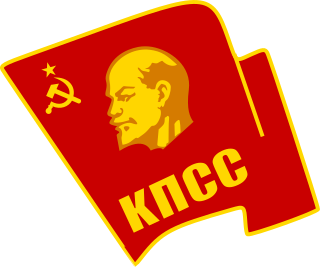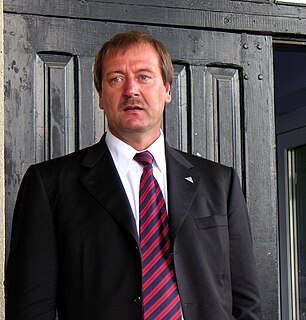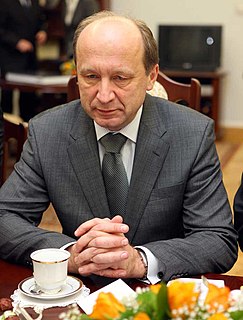| |||||||||||||||||||||||||
All 141 seats to the Seimas 71 seats were needed for a majority | |||||||||||||||||||||||||
| |||||||||||||||||||||||||
| |||||||||||||||||||||||||
 |
|---|
| This article is part of a series on the politics and government of Lithuania |
| Constitution |
Legislature |
Judiciary |
Parliamentary elections were held in Lithuania in two stages on 20 October and 10 November 1996. [1] All 141 seats in the Seimas were up for election; 70 based on proportional party lists and 71 in single member constituencies. Where no candidate gained more than 50% of the vote on 20 October, a run-off was held on 10 November.

Lithuania, officially the Republic of Lithuania, is a country in the Baltic region of Europe. Lithuania is considered to be one of the Baltic states. It is situated along the southeastern shore of the Baltic Sea, to the east of Sweden and Denmark. It is bordered by Latvia to the north, Belarus to the east and south, Poland to the south, and Kaliningrad Oblast to the southwest. Lithuania has an estimated population of 2.8 million people as of 2019, and its capital and largest city is Vilnius. Other major cities are Kaunas and Klaipėda. Lithuanians are Baltic people. The official language, Lithuanian, along with Latvian, is one of only two living languages in the Baltic branch of the Indo-European language family.

The Seimas of the Republic of Lithuania, or simply the Seimas, is the unicameral parliament of Lithuania. The Seimas constitutes the legislative branch of government in Lithuania, enacting laws and amendments to the Constitution, passing the budget, confirming the Prime Minister and the Government and controlling their activities.

The two-round system is a voting method used to elect a single winner, where the voter casts a single vote for their chosen candidate. However, if no candidate receives the required number of votes, then those candidates having less than a certain proportion of the votes, or all but the two candidates receiving the most votes, are eliminated, and a second round of voting is held.
Contents
The first round of the elections was held concurrently with a referendum to amend Articles 55, 57 and 131 of the constitution, and a referendum on the use of proceeds from privatization. The second round was held concurrently with a referendum to amend Article 47 of the constitution. Due to a low turnout, none of the referendum questions succeeded in getting approval from at least 50% of registered voters.

The Constitution of the Republic of Lithuania defines the legal foundation for all laws passed in the Republic of Lithuania. It was approved in a referendum on 25 October 1992.
Privatization can mean different things including moving something from the public sector into the private sector. It is also sometimes used as a synonym for deregulation when a heavily regulated private company or industry becomes less regulated. Government functions and services may also be privatized; in this case, private entities are tasked with the implementation of government programs or performance of government services that had previously been the purview of state-run agencies. Some examples include revenue collection, law enforcement, and prison management.
Elections were won by the Homeland Union - Lithuanian Conservatives, which gained 70 seats, forming a coalition with second-place Lithuanian Christian Democratic Party. Homeland Union benefited from popular dissatisfaction with the ruling Democratic Labour Party of Lithuania, which had failed to reignite the economy and was plagued by financial scandals. Gediminas Vagnorius was subsequently appointed as the Prime Minister.
The Homeland Union – Lithuanian Christian Democrats is a centre-right political party in Lithuania. It has 18,000 members and 30 of 141 seats in the Seimas.
The Lithuanian Christian Democratic Party was a Christian-democratic political party in Lithuania.

Democratic Labour Party of Lithuania was a social democratic political party in Lithuania in 1990s. The youth organization of LDDP was called Lithuanian Labourist Youth Union.












